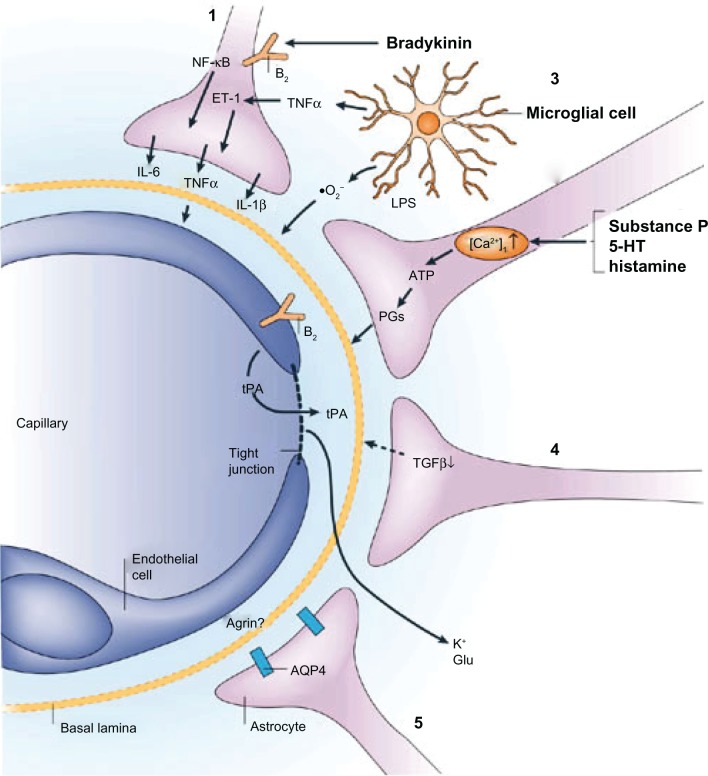Figure 1.
Examples of astroglial-endothelial signaling in infection or inflammation, stroke or trauma, leading to opening of the blood–brain barrier and disturbance of brain function. Bradykinin, produced during inflammation in stroke or brain trauma, acts on endothelial and astroglial bradykinin B2 receptors, leading to an increase in the concentration of intracellular Ca2+. In astrocytes, this can trigger the production of IL-6 through activation of nuclear factor-κB.1 (1). Bradykinin, substance P, 5-HT (serotonin) and histamine acting on astrocytes can lead to the formation of ATP and PGs, with effects on vascular tone and endothelial permeability (2) by mechanisms that are known to involve endothelium. Lipopolysaccharide (LPS), formed in infections, leads to the release from microglia of TNFα, IL-1β, and reactive oxygen species (including O2−), all of which have the ability to open the blood-brain barrier (3). Astrocytes downregulate tPA production via TGFβ, but there is still sufficient tPA to open the blood–brain barrier, leading to an influx of tPA from the blood (4). Following disruption of the blood–brain barrier involving a decrease in agrin expression, K+ and Glu from the blood can reach the brain extracellular space. AQP4 is upregulated on the astroglial endfeet, leading to astroglial swelling (5). Reprinted by permission from Macmillan Publishers Ltd: Nature Publishing Group62, copyright 2006.
Abbreviations: IL, interleukin; NF-κB, nuclear factor-κB; 5-HT, 5-hydroxytryptamine; PGs, prostaglandins; TNFα, tumor necrosis factor-α; tPA, tissue plasminogen activator; TGFβ, transforming growth factor-β; Glu, glutamate; AQP4, aquaporin 4; ET1, endothelin 1.

